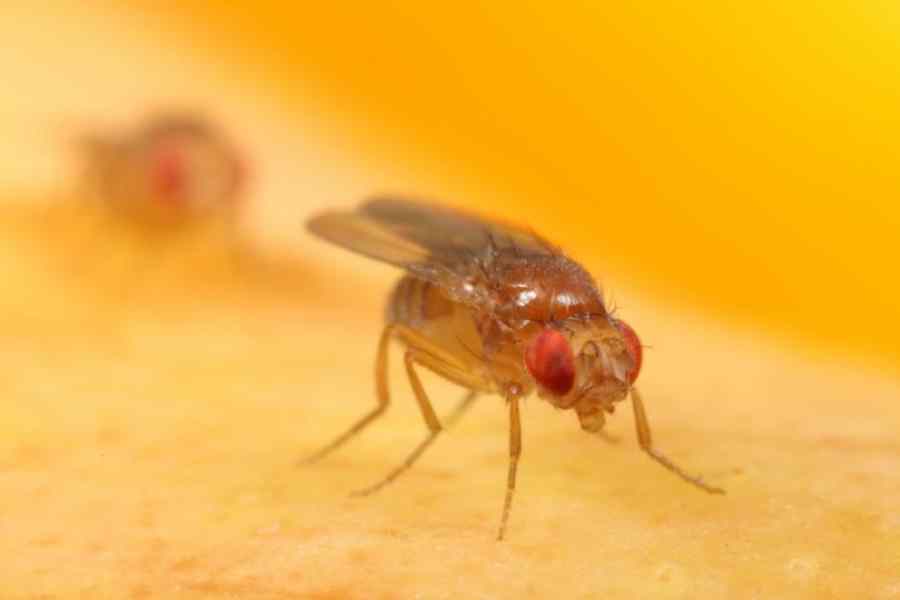Fruit flies reared in an academic lab could become the inaugural “passengers” on the first uncrewed Gaganyaan flight if India’s space agency proceeds with a proposal to accommodate a biology experiment on the flight.
Scientists at the Indian Institute of Space Science and Technology (IIST), Thiruvananthapuram, have designed and developed the protocols for an experiment to study how spaceflight influences kidney stone formation mechanisms in Drosophila melanogaster, or fruit flies.
The experiment, proposed by the IIST’s space biology group and funded by the Indian Space Research Organisation (Isro), envisions sending 20 containers, each housing 30 to 40 fruit flies, on the first of two planned uncrewed Gaganyaan flights.
Isro engineers are hoping to launch the first uncrewed Gaganyaan flight in December this year.
India wants to establish homegrown human spaceflight capabilities through the Gaganyaan mission that seeks to launch a crew module with one or two astronauts into a 400km orbit around Earth and bring it back through a parachute-assisted sea landing.
While the first uncrewed flight’s primary objectives will be to demonstrate the performance of the launch rocket, the crew module and the return-to-Earth sequence, the fruit fly containers are intended to travel inside the crew module as a piggyback experiment.
“The kidneys are particularly vulnerable to long spaceflight exposure — we want to study the molecular changes in fruit fly organs that are equivalent to human kidneys,” Kumaran Sreejalekshmi, a professor of chemistry at the IIST and the experiment’s principal investigator, told The Telegraph.
Sreejalekshmi and her colleagues will induce the formation of kidney stones in the fruit flies by altering their diet during the spaceflight. When the fruit flies return from their journey, the scientists will study the structure and molecular biochemistry of the fruit flies’ malpighian tubules, the organs that filter out toxic byproducts just as kidneys do in mammals.
An independent study led by scientists at the University College London in the UK and published in the journal Nature Communications in June this year had found that long-duration exposure to deep space environments can lead to significant kidney damage.
UCL researcher Keith Siew and his colleagues had designed the first study to assess the kidneys of mice, exposed to galactic cosmic radiation equivalent to what humans might get exposed to during a mission to Mars, expected to take up to two-and-a-half years.
By the equivalent of six months of exposure, the scientists noticed signs of kidney dysfunction with little blood clots in the kidneys of some of the mice. They found that the tubules — the functional units in kidneys — changed their structure in response to spaceflight. This is one possible mechanism to explain the enhanced kidney stone risk in spaceflight-exposed people.
The IIST scientists are hoping that any new insights into the molecular mechanisms of kidney stone formation after spaceflight exposure could be used to screen candidate drug molecules to avert or reverse the stone formation process.
“These are experiments with long-time horizons,” Sreejalekshmi said. They’re intended to generate new knowledge to guide space missions in the years and decades to come. “For now, they’re intended to also enthuse students to pursue space biology,” she said.
The IIST, a department of space institution, has been a key source of human resources for India’s expanding space activities. Many students, mentored by faculty and alumni at Isro, are already at work, assisting with payloads for ongoing missions or assisting with futuristic ideas.
Antony Arupara, Srinivas Balaji, Zeel Gabani and Sanyam Gupta are all third-year BTech students at IIST, each drawn into innovations for the future — an electromagnetic docking mechanism for space structures that could be crucial when India begins building its own space station, a device to study how microgravity influences microbes in the human digestive tract, a diagnostic tool to study the plasma plume from electric propulsion engines, and electronics for nanosatellites, among others.
Isro’s Gaganyaan mission is expected to be the precursor to new, even bigger Indian human missions into space. Prime Minister Narendra Modi had last year asked Isro to work towards building an Indian space station by 2035 and placing Indian astronauts on the Moon by 2040.











